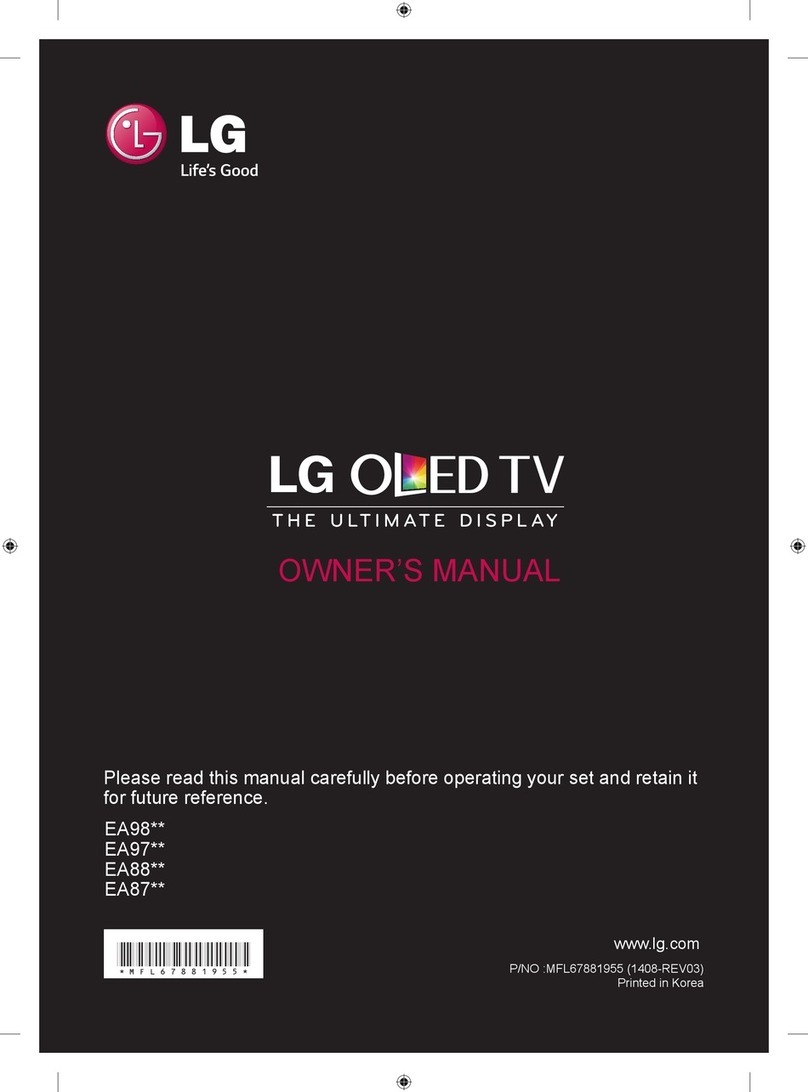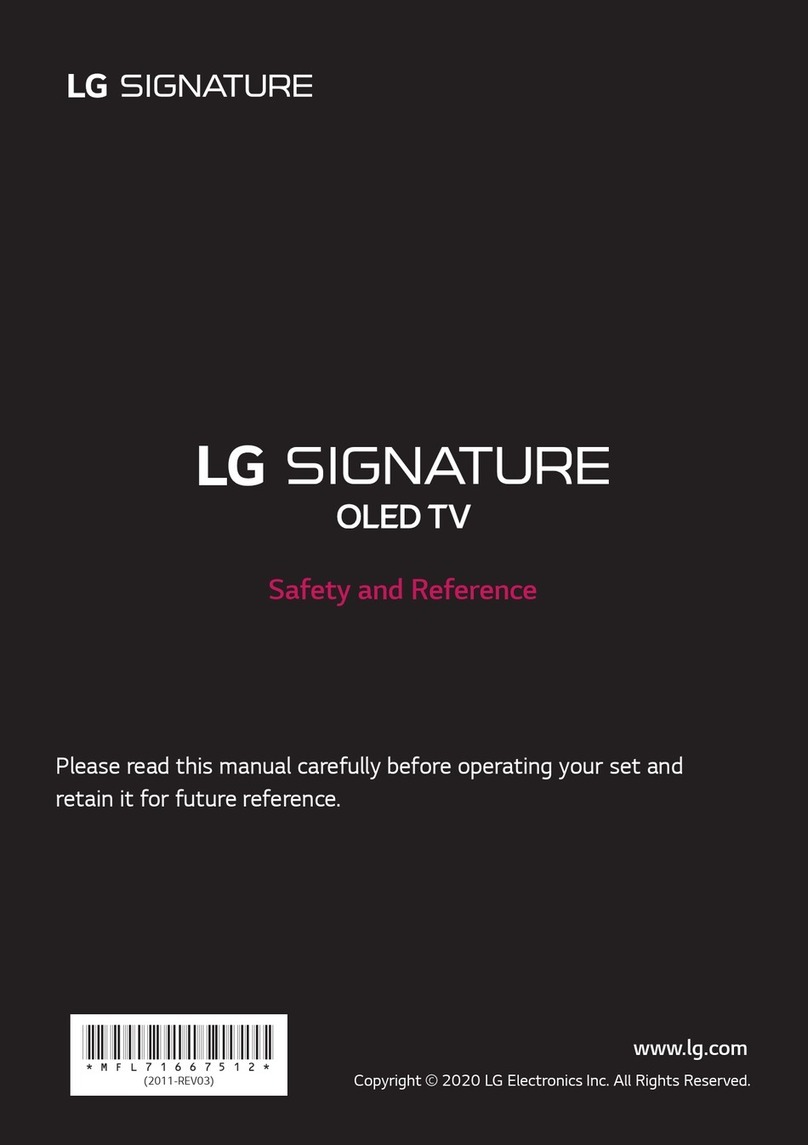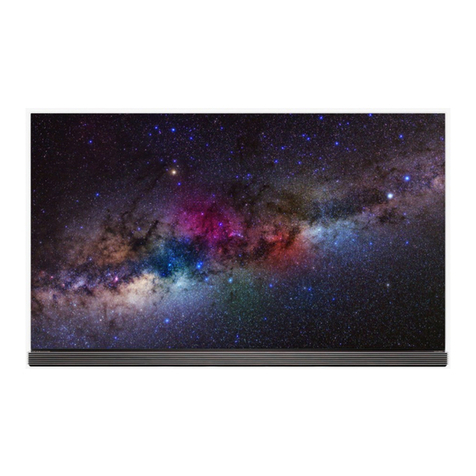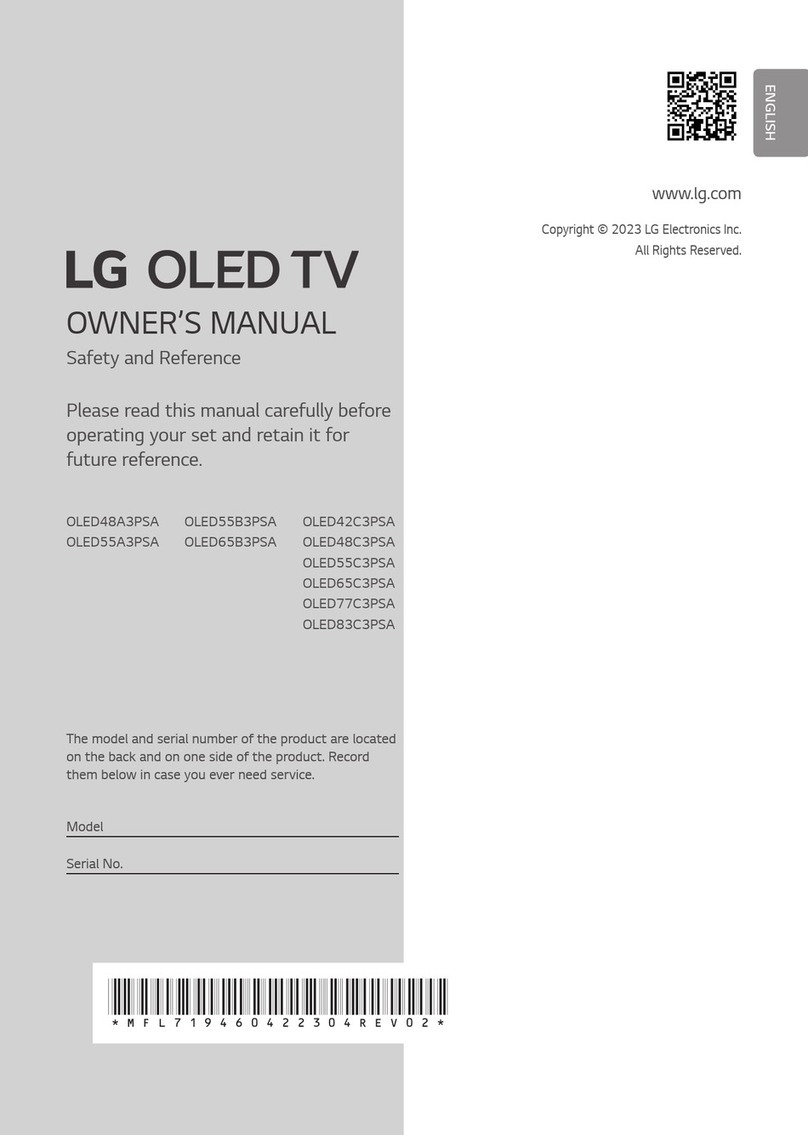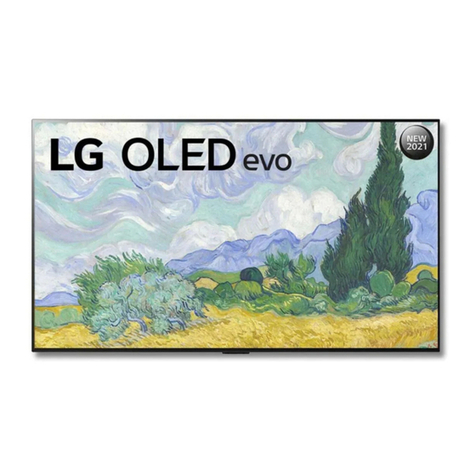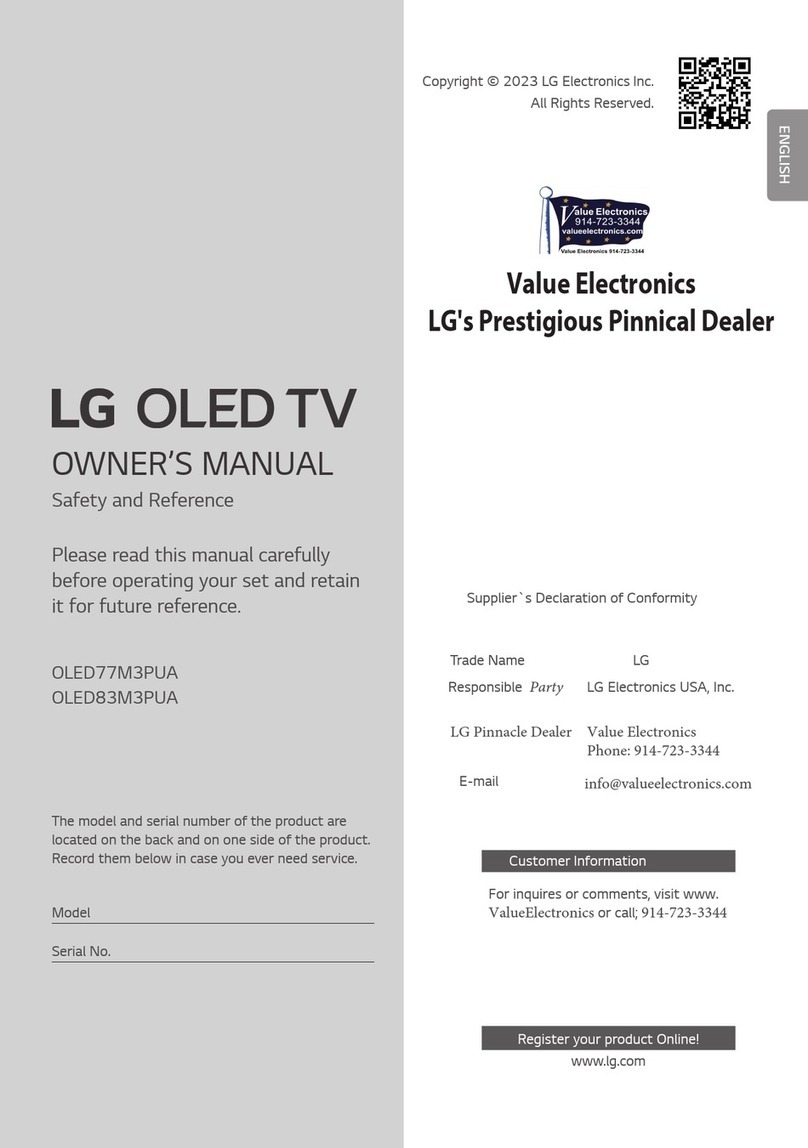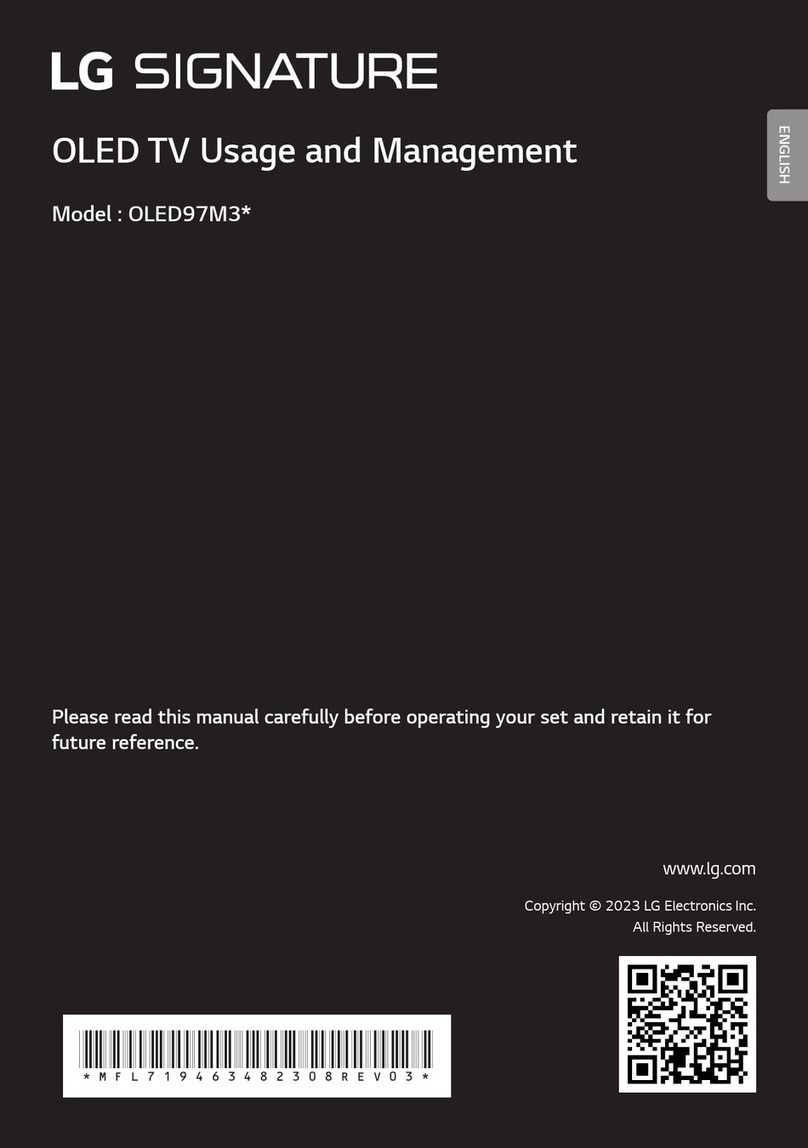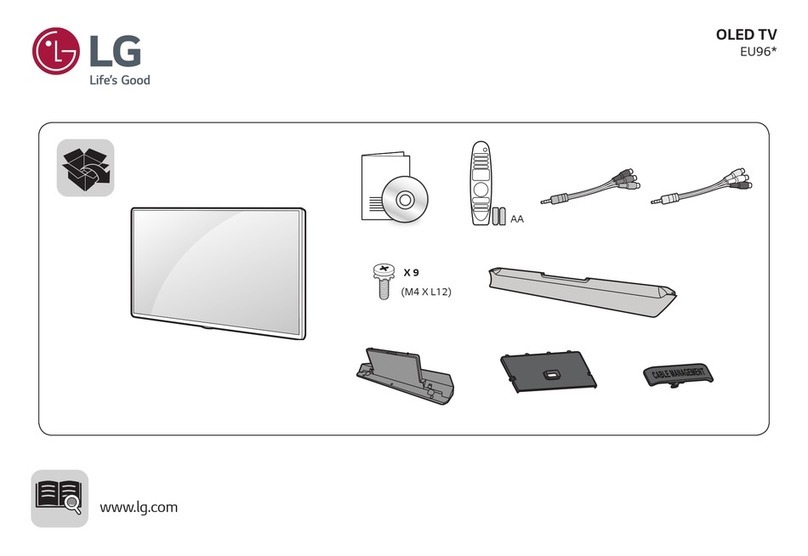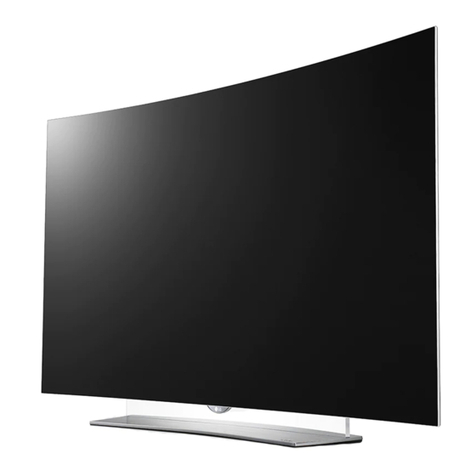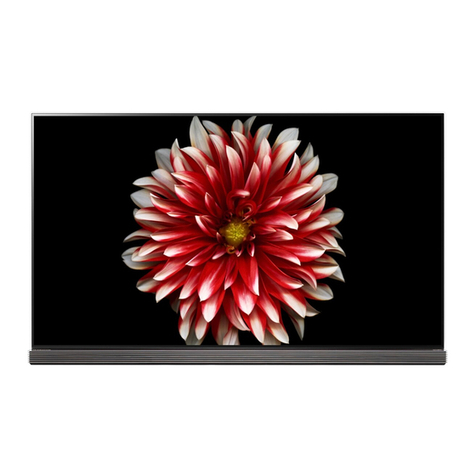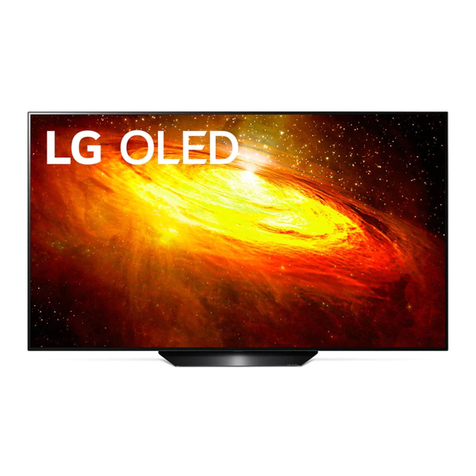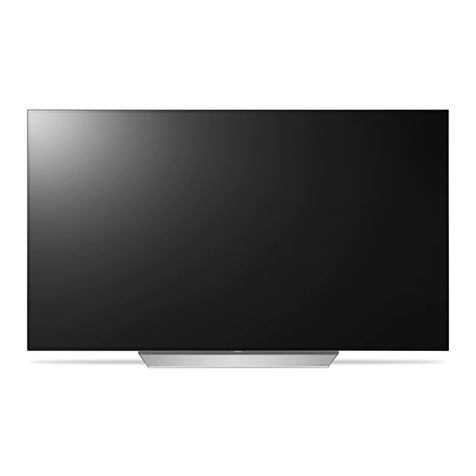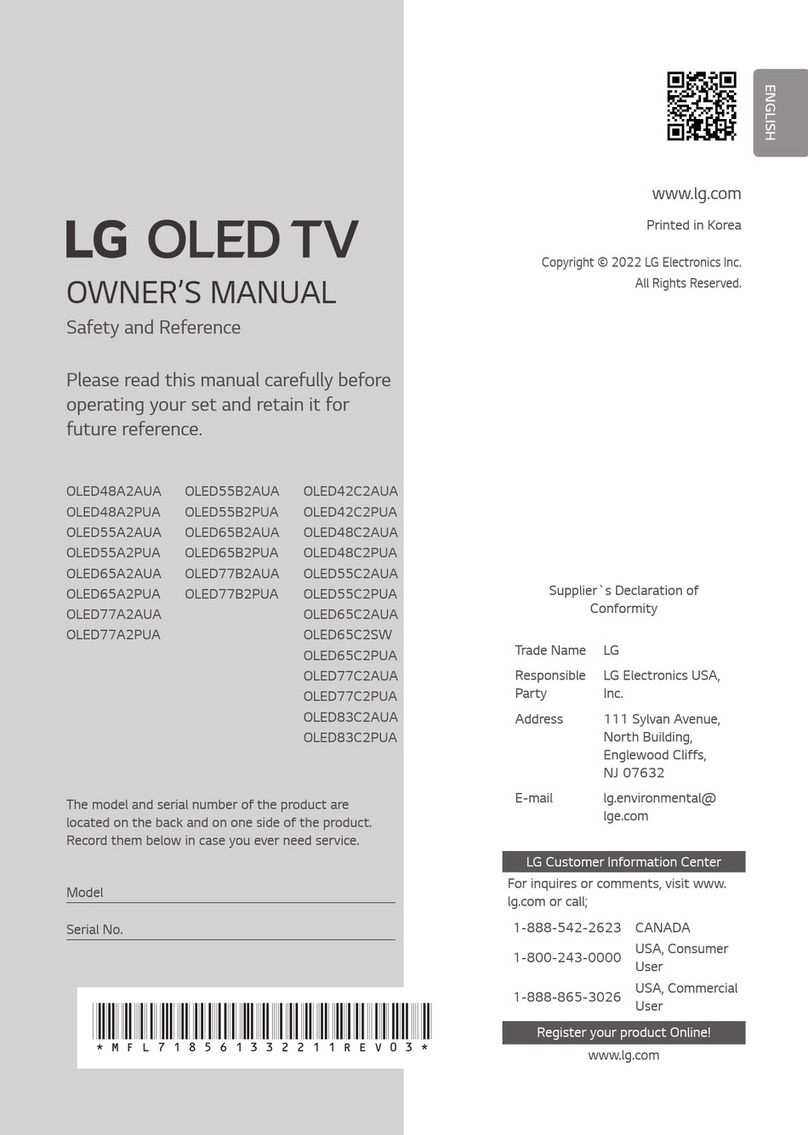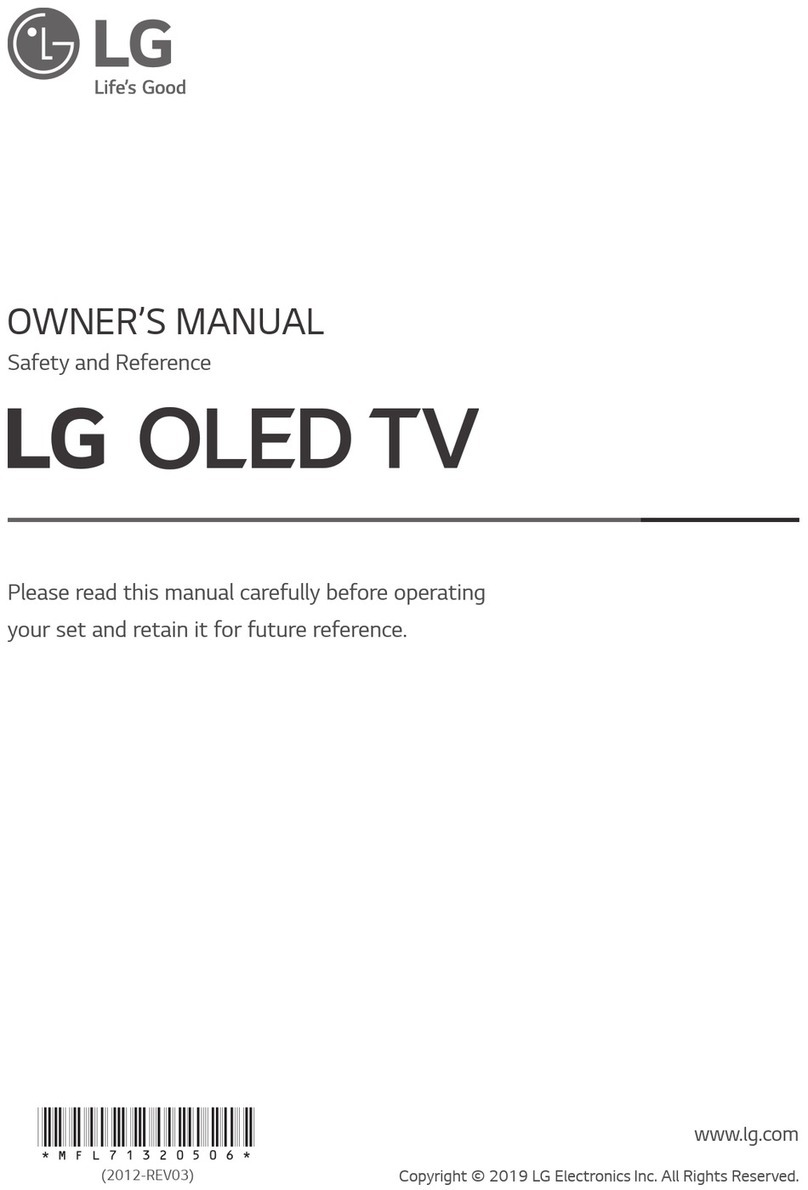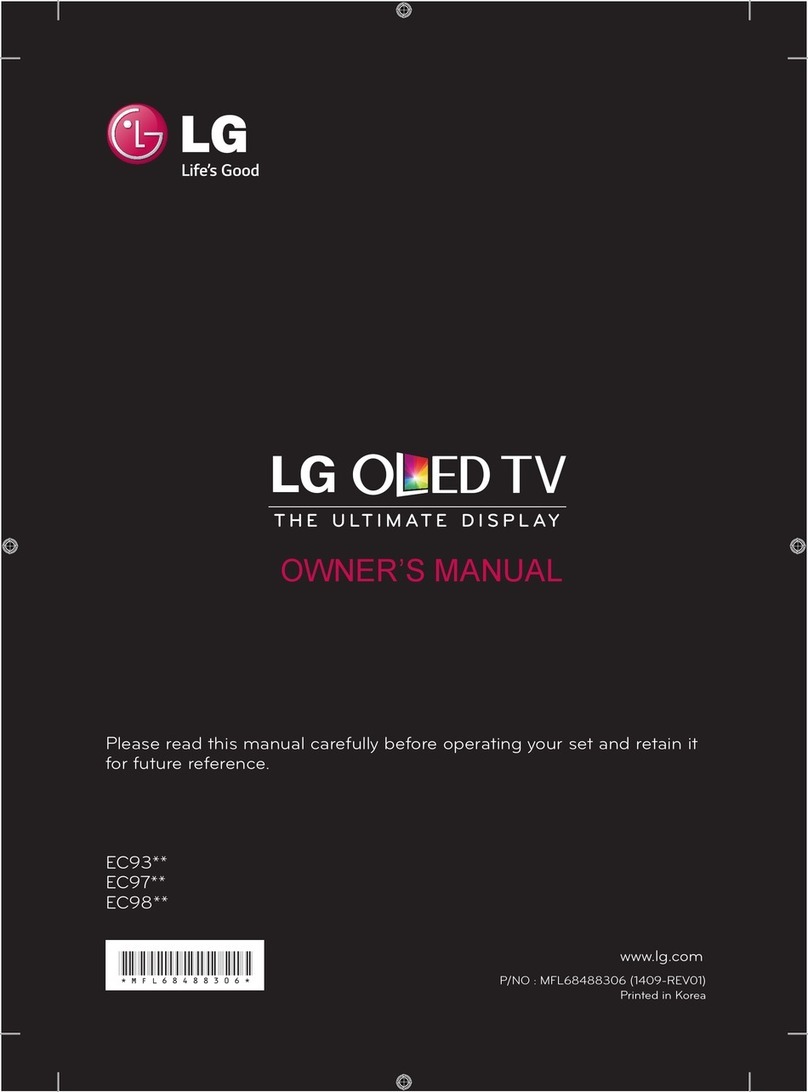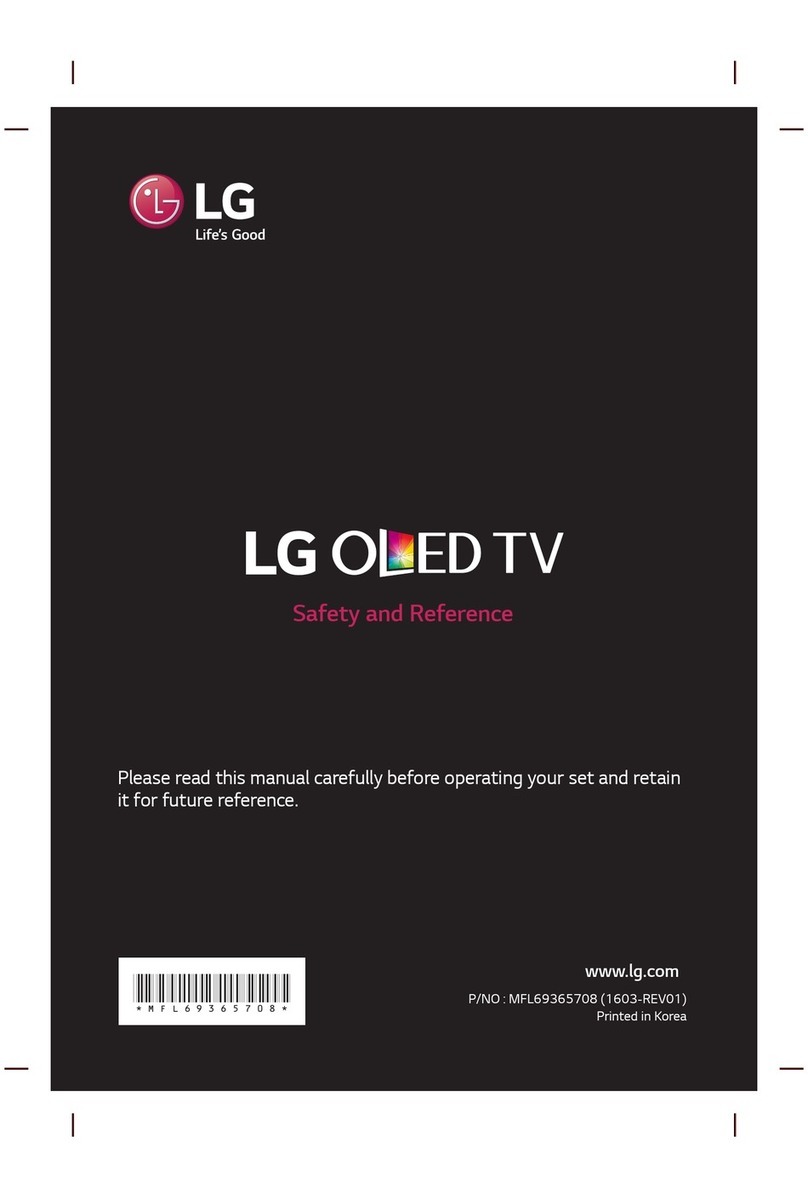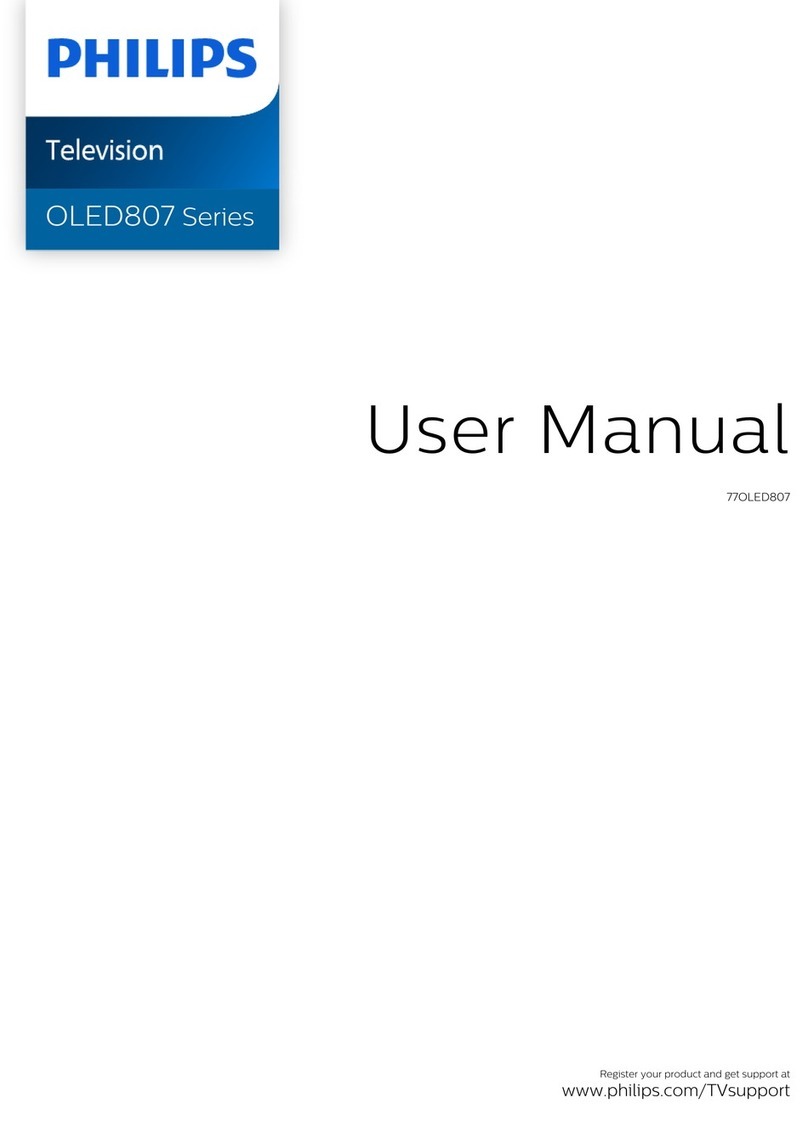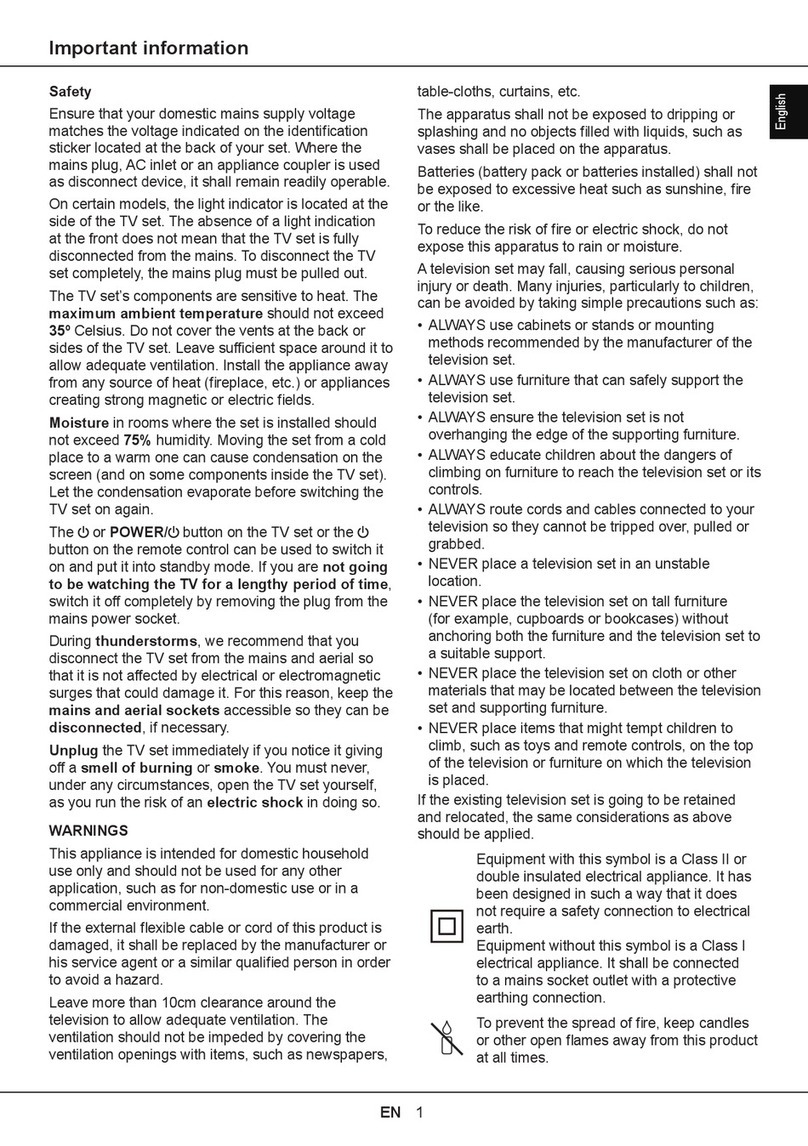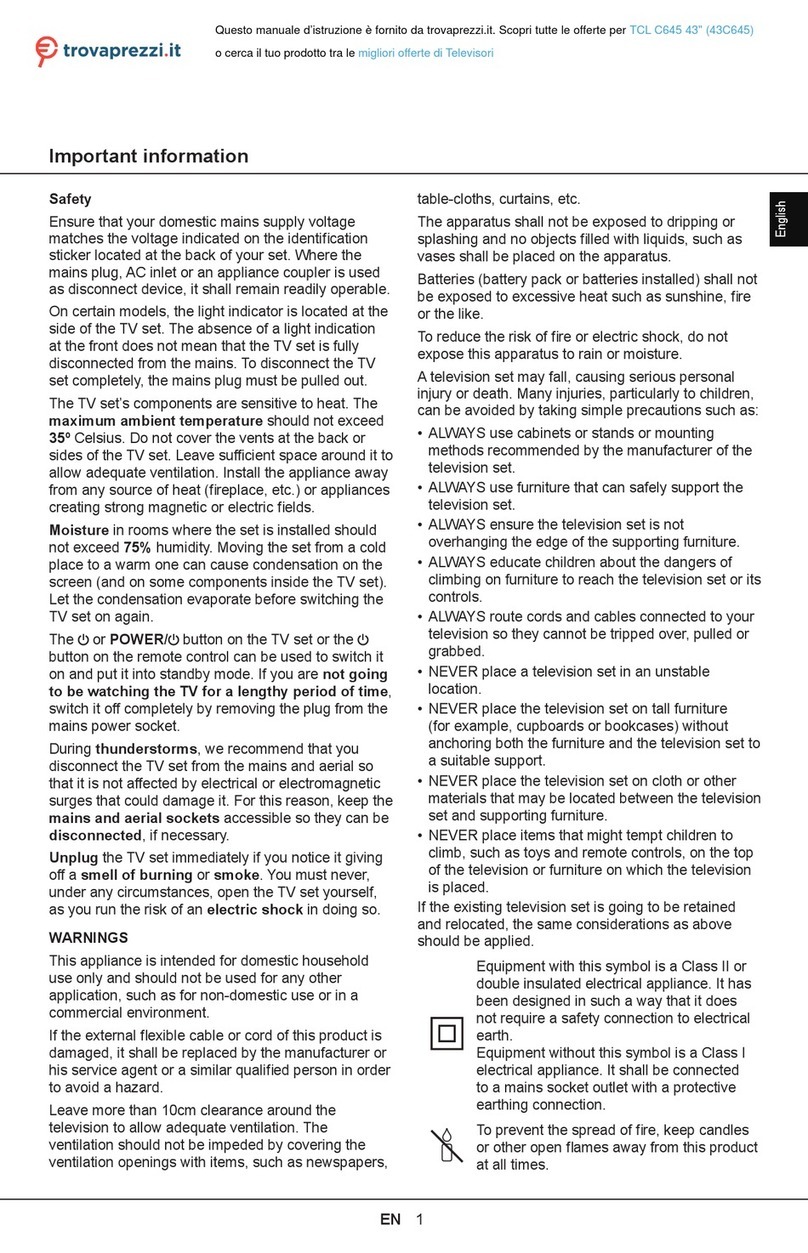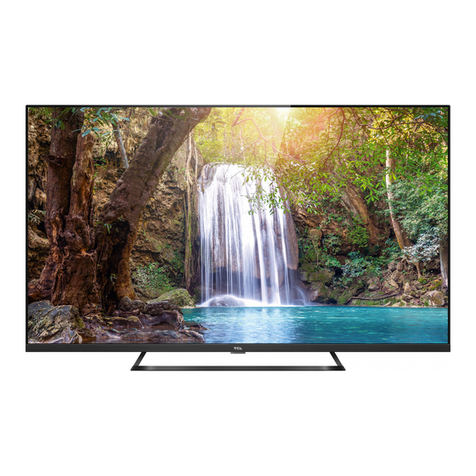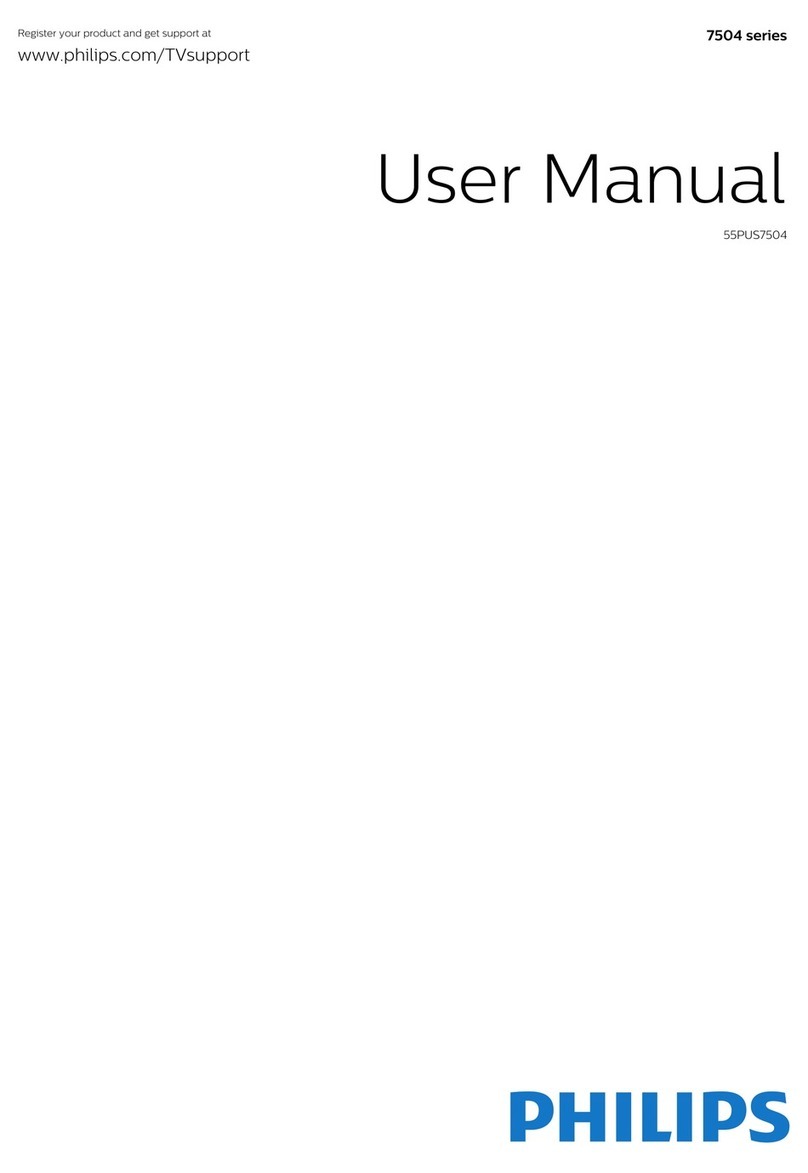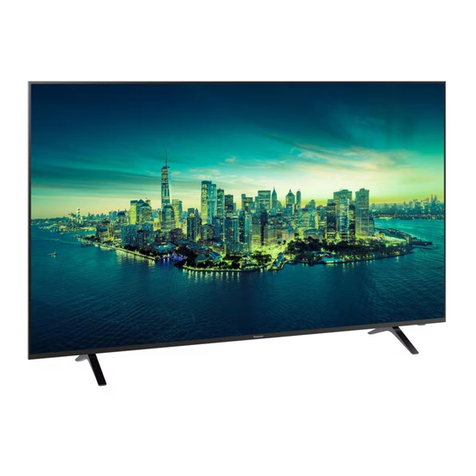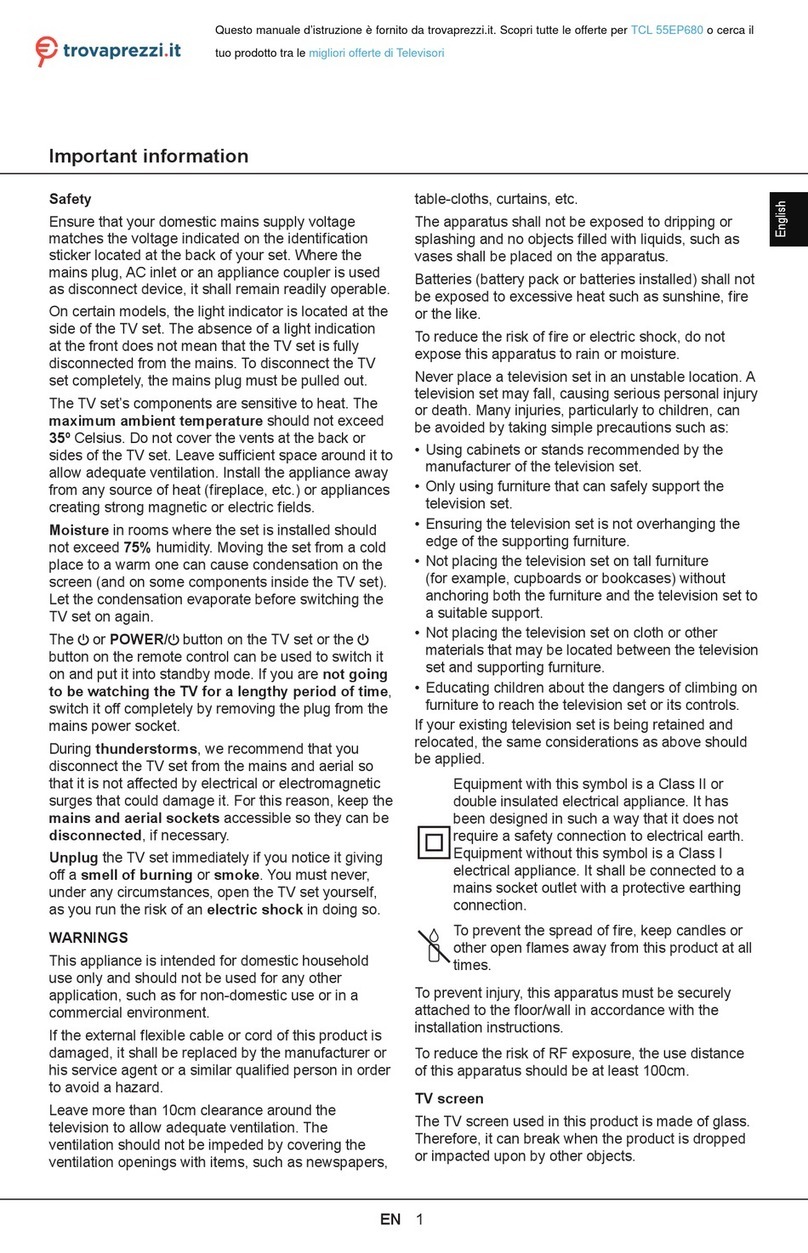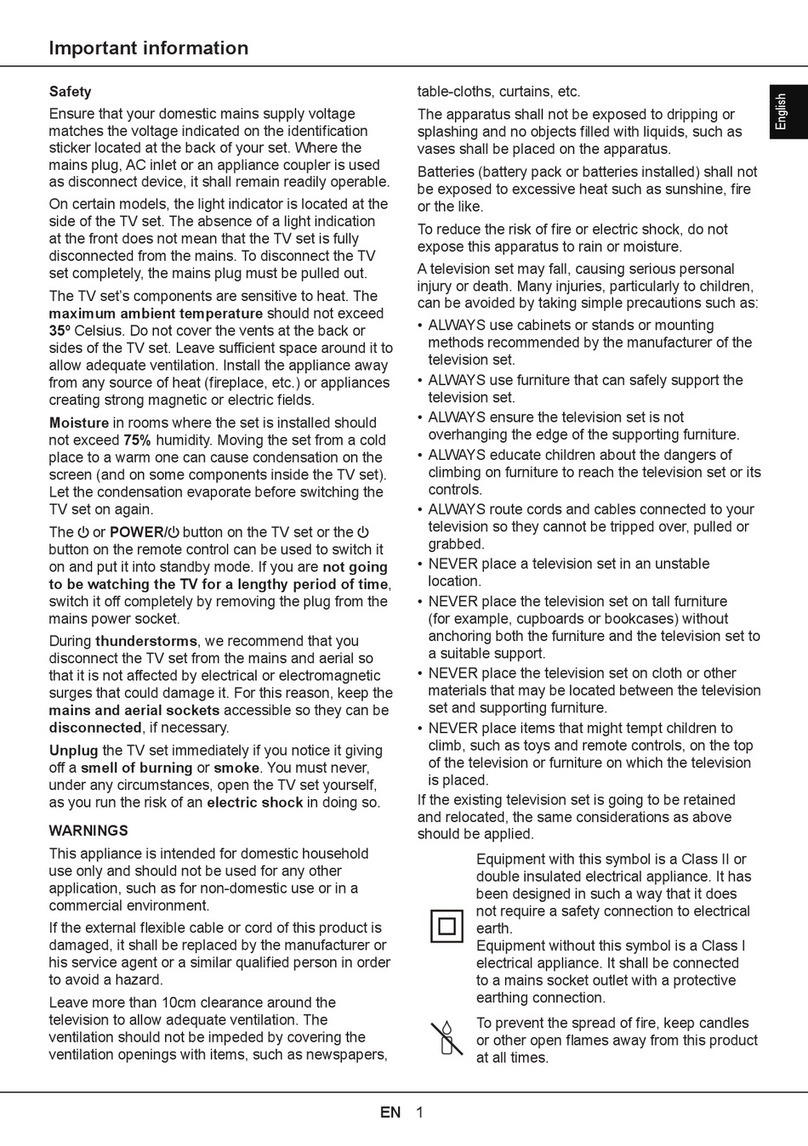
LGEInternalUseOnlyCopyright 2010 LGElectronics.Inc.Allrightsreserved.
Onlyfortrainingandservicepurposes
-4-
CAUTION:Beforeservicingreceiverscoveredbythisservice
manualand itssupplementsandaddenda,readand followthe
ÍßÚÛÌÇÐÎÛÝßËÌ×ÑÒÍ onpage3of thispublication.
ÒÑÌÛæ
Ifunforeseencircumstancescreateconflictbetweenthe
followingservicingprecautionsandany of thesafety precautionson
page3ofthispublication, alwaysfollowthesafetyprecautions.
Remember:Safety First.
GeneralServicing Precautions
1.Alwaysunplugthereceiver ACpower cordfromtheACpower
sourcebefore;
a.Removing or reinstalling anycomponent,circuit board
moduleorany other receiver assembly.
b.Disconnecting or reconnectingany receiver electricalplugor
other electrical connection.
c.Connecting atestsubstitute inparallel withan electrolytic
capacitor inthereceiver.
CAUTION: Awrongpart substitutionorincorrectpolarity
installationofelectrolyticcapacitorsmayresultinan
explosionhazard.
2.Testhighvoltageonlybymeasuring itwithan appropriatehigh
voltagemeterorother voltagemeasuringdevice(DVM,
FETVOM,etc)equipped withasuitablehigh voltageprobe.
Donot testhigh voltageby"drawing anarc".
3.Do notspray chemicalsonor nearthisreceiverorany ofits
assemblies.
4.Unlessspecified otherwisein thisservicemanual, clean
electricalcontacts onlyby applyingthefollowing mixture to the
contactswithapipecleaner, cotton-tippedstick or comparable
non-abrasiveapplicator;10 %(byvolume) Acetoneand90 %
(by volume) isopropyl alcohol (90 % -99% strength)
CAUTION: Thisisaflammablemixture.
Unlessspecifiedotherwiseinthisservicemanual,lubricationof
contactsinnot required.
5.Donotdefeatany plug/socket B+voltageinterlockswithwhich
receivers covered bythisservicemanual mightbeequipped.
6.Do not applyACpower to thisinstrumentand/orany of its
electricalassemblies unless all solid-state deviceheatsinksare
correctlyinstalled.
7.Alwaysconnectthetestreceiver ground leadto thereceiver
chassisgroundbefore connecting thetestreceiverpositive
lead.
Alwaysremovethetestreceiver ground lead last.
8. Ë-» ©·¬¸¬¸·- ®»½»·ª»®±²´§ ¬¸» ¬»-¬º·¨¬«®»- -°»½·º·»¼·²¬¸·-
-»®ª·½»³¿²«¿´ò
CAUTION: Donotconnectthetest fixture groundstraptoany
heatsinkinthisreceiver.
Electrostatically Sensitive(ES)Devices
Somesemiconductor (solid-state) devices can bedamagedeasily
by staticelectricity.Such componentscommonly are called
Û´»½¬®±-¬¿¬·½¿´´§Í»²-·¬·ª» øÛÍ÷Ü»ª·½»-ò Examplesof typicalES
devicesare integratedcircuitsandsome field-effecttransistors and
semiconductor"chip" components.Thefollowingtechniques
should beused to helpreducetheincidenceofcomponent
damagecaused bystaticbystaticelectricity.
1.Immediatelybefore handlingany semiconductor componentor
semiconductor-equipped assembly,drain offany electrostatic
charge onyourbodyby touching aknownearthground.
Alternatively,obtainandwearacommerciallyavailable
discharging wriststrap device, which should beremoved to
preventpotentialshockreasonsprior toapplying power to the
unitunder test.
2.After removingan electricalassemblyequipped withES
devices, placetheassemblyonaconductivesurfacesuchas
aluminumfoil, topreventelectrostaticcharge buildupor
exposureof theassembly.
3.Useonlyagrounded-tip solderingironto solder or unsolder ES
devices.
4.Useonlyananti-statictype solder removaldevice. Somesolder
removaldevicesnot classified as"anti-static"can generate
electrical charges sufficienttodamageESdevices.
5.Do not usefreon-propelledchemicals.Thesecangenerate
electrical charges sufficienttodamageESdevices.
6.DonotremoveareplacementESdevicefromitsprotective
packageuntilimmediatelybeforeyouarereadytoinstall it.
(MostreplacementESdevicesarepackagedwithleads
electricallyshortedtogether byconductivefoam,aluminumfoil
or comparableconductivematerial).
7.Immediatelybefore removingtheprotectivematerialfromthe
leadsofareplacementESdevice, touch theprotectivematerial
to thechassisorcircuitassembly into which thedevicewillbe
installed.
CAUTION: Be sure no power isapplied to thechassisorcircuit,
andobserveall other safetyprecautions.
8.Minimizebodilymotionswhenhandling unpackaged
replacementESdevices. (Otherwise harmless motionsuchas
thebrushing together ofyour clothes fabricor thelifting ofyour
foot fromacarpetedfloorcangenerate staticelectricity
sufficienttodamageanESdevice.)
GeneralSoldering Guidelines
1.Useagrounded-tip,low-wattagesoldering ironandappropriate
tipsizeandshapethatwill maintain tip temperature withinthe
rangeor 500 °Fto 600 °F.
2.Usean appropriate gaugeofRMAresin-core solder composed
of 60parts tin/40 partslead.
3.Keepthesoldering irontipclean and well tinned.
4.Thoroughlyclean thesurfaces tobesoldered.Useamallwire-
bristle(0.5inch,or 1.25 cm)brushwithametal handle.
Donot usefreon-propelledspray-oncleaners.
5.Usethefollowing unsoldering technique
a.Allow thesoldering irontip to reachnormal temperature.
(500 °Fto 600 °F)
b.Heatthecomponentlead until thesolder melts.
c.Quicklydrawthemeltedsolderwithan anti-static,suction-
typesolder removaldeviceorwithsolder braid.
CAUTION:Workquicklytoavoid overheatingthecircuit
board printed foil.
6.Usethefollowing solderingtechnique.
a.Allowthesolderingirontip toreachanormaltemperature
(500 °Fto 600 °F)
b.First, hold thesoldering irontip andsolder the strandagainst
thecomponentleaduntilthesoldermelts.
c.Quicklymovethesolderingirontipto thejunctionof the
componentleadandtheprintedcircuitfoil,andhold itthere
onlyuntilthesolderflowsontoandaround boththe
componentlead andthefoil.
CAUTION: Workquicklyto avoidoverheating thecircuit
board printed foil.
d.Closelyinspectthesolder areaandremoveanyexcessor
splashed solder withasmall wire-bristlebrush.
SERVICINGPRECAUTIONS
纸型号咨询交流QQ:934158227
QQ:934158227 QQ:934158227 QQ:934158227
维修手册型号咨询交流QQ:934158227
CuuDuongThanCong.com https://fb.com/tailieudientucntt
